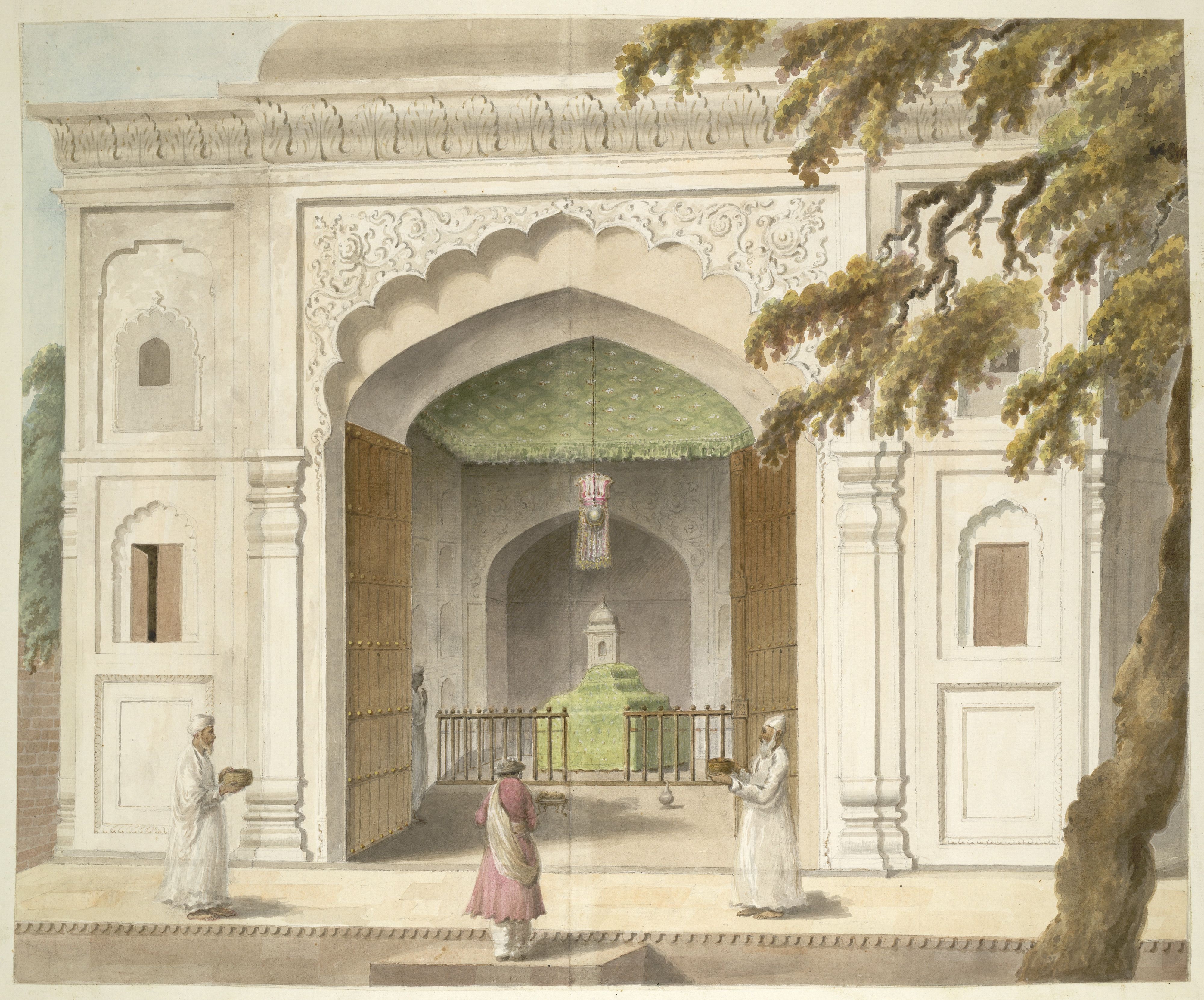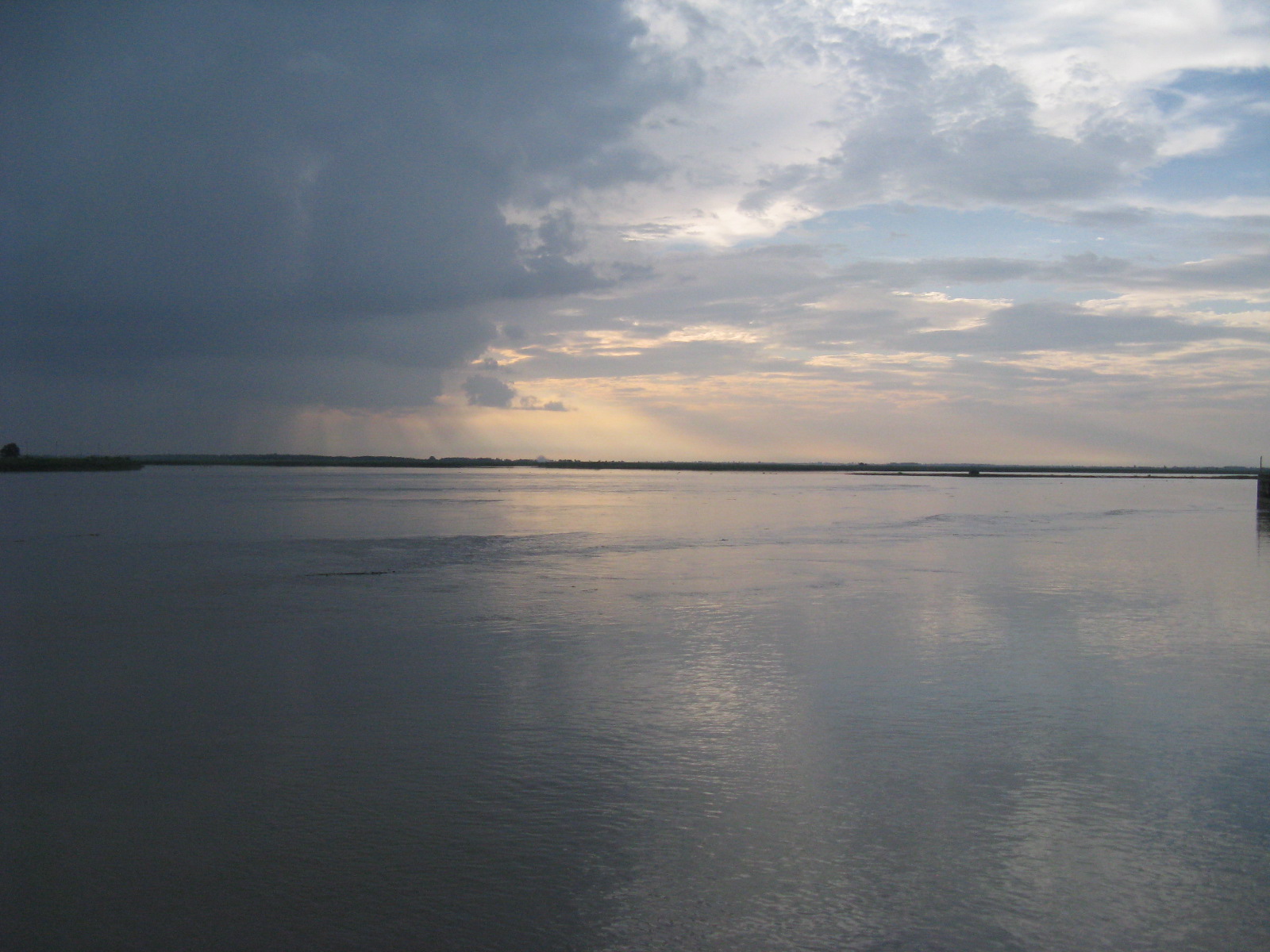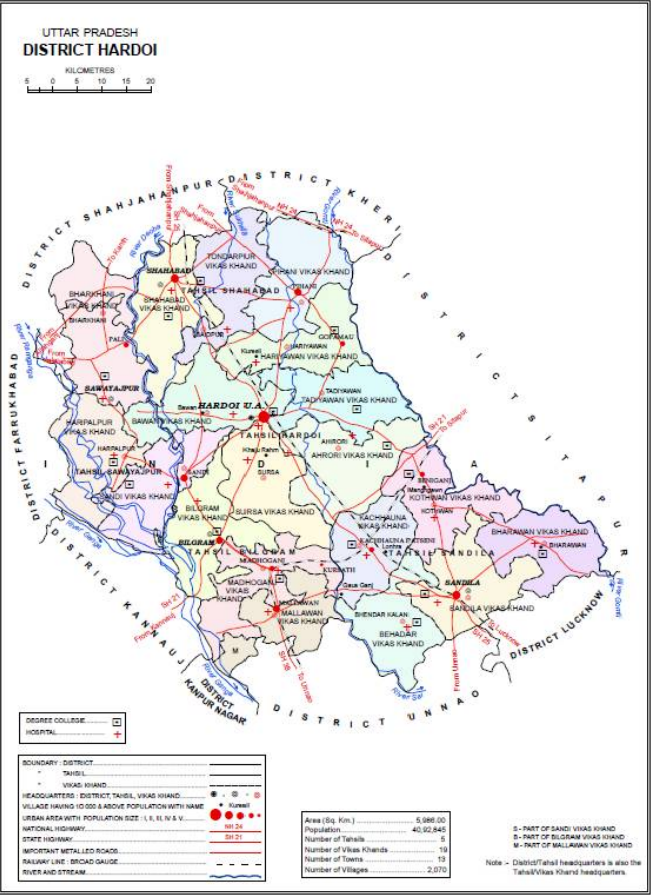|
Kanauji
Kannauji is an Indo-Aryan language spoken in the Kannauj region of the Indian state of Uttar Pradesh. Kannauji is closely related to Hindustani, with a lexical similarity of 83–94% with Hindi. Some consider it to be a dialect of Hindustani, whereas others consider it a separate Western Hindi language. Kannauji has at least 9.5 million native speakers as of 2001. Kannauji shares many structural and functional differences from other dialects of Hindi, but in the Linguistic Survey of India it has been added as a variant of Braj and Awadhi. Kannauji has two dialects or variants of its own: Tirhari and Transitional Kannauji, which is between standard Kannauji and Awadhi. Geographical distribution Kannauji is not a standard dialect of Hindi and can be assumed to be the transitory phase between Braj Bhasha and Awadhi. Eastern parts are heavily influenced by Awadhi whereas Western districts are Braj speaking. Kannauji is predominantly spoken around the historic town of Kannauj in ... [...More Info...] [...Related Items...] OR: [Wikipedia] [Google] [Baidu] |
Kannauj
Kannauj ( Hindustani pronunciation: ənːɔːd͡ʒ is a city, administrative headquarters and a municipal board or Nagar Palika Parishad in Kannauj district in the Indian state of Uttar Pradesh. The city's name is a corrupted form of the classical name ''Kanyakubja''. It was also known as ''Mahodaya'' during the time of Mihira Bhoja Kannauj is an ancient city. It is said that the Kanyakubja Brahmins who included Shandilya (teacher of Rishi Bharadwaja) were held one of the three prominent families originally from Kannauj. In Classical India, it served as the center of imperial Indian dynasties. The earliest of these was the Maukhari dynasty, and later, Emperor Harsha of the Vardhana dynasty.Tripathi, ''History of Kanauj'', p. 192 The city later came under the Gahadavala dynasty, and under the rule of Govindachandra, the city reached "unprecedented glory". Kannauj was also the main place of war in the Tripartite struggle between the Gurjara-Pratihara, the Palas and the Ra ... [...More Info...] [...Related Items...] OR: [Wikipedia] [Google] [Baidu] |
India
India, officially the Republic of India (Hindi: ), is a country in South Asia. It is the seventh-largest country by area, the second-most populous country, and the most populous democracy in the world. Bounded by the Indian Ocean on the south, the Arabian Sea on the southwest, and the Bay of Bengal on the southeast, it shares land borders with Pakistan to the west; China, Nepal, and Bhutan to the north; and Bangladesh and Myanmar to the east. In the Indian Ocean, India is in the vicinity of Sri Lanka and the Maldives; its Andaman and Nicobar Islands share a maritime border with Thailand, Myanmar, and Indonesia. Modern humans arrived on the Indian subcontinent from Africa no later than 55,000 years ago., "Y-Chromosome and Mt-DNA data support the colonization of South Asia by modern humans originating in Africa. ... Coalescence dates for most non-European populations average to between 73–55 ka.", "Modern human beings—''Homo sapiens''—originated in Africa. Then, interm ... [...More Info...] [...Related Items...] OR: [Wikipedia] [Google] [Baidu] |
Doab
''Doab'' () is a term used in South Asia Quote: "Originally and chiefly in South Asia: (the name of) a strip or narrow tract of land between two rivers; spec. (with) the area between the rivers Ganges and Jumna in northern India." for the tract Quote: "confluence, land between two rivers, used in India of the tongue of land between the Ganges and Jumna, and of similar tracts in the Punjab, etc., lit. ‘two waters’ " of land lying between two confluent rivers. It is similar to an interfluve. Quote: " a tract of land between two rivers : interfluve" In the ''Oxford Hindi-English Dictionary'', R. S. McGregor defines it as from Persian ''do-āb'' (, literally "two odiesof water") "a region lying between and reaching to the confluence of two rivers. The Doab ''The Doab'' designates the flat alluvial tract between the Ganges and Yamuna rivers extending from the Sivalik Hills to the two rivers' confluence at Prayagraj. It is also called as ''Ganges-Yamuna Doab'' or ''Gang ... [...More Info...] [...Related Items...] OR: [Wikipedia] [Google] [Baidu] |
George A
George may refer to: People * George (given name) * George (surname) * George (singer), American-Canadian singer George Nozuka, known by the mononym George * George Washington, First President of the United States * George W. Bush, 43rd President of the United States * George H. W. Bush, 41st President of the United States * George V, King of Great Britain, Ireland, the British Dominions and Emperor of India from 1910-1936 * George VI, King of Great Britain, Ireland, the British Dominions and Emperor of India from 1936-1952 * Prince George of Wales * George Papagheorghe also known as Jorge / GEØRGE * George, stage name of Giorgio Moroder * George Harrison, an English musician and singer-songwriter Places South Africa * George, Western Cape ** George Airport United States * George, Iowa * George, Missouri * George, Washington * George County, Mississippi * George Air Force Base, a former U.S. Air Force base located in California Characters * George (Peppa Pig), a 2-yea ... [...More Info...] [...Related Items...] OR: [Wikipedia] [Google] [Baidu] |
Rohilkhand
Rohilkhand (previously Rampur State) is a region in the northwestern part of Uttar Pradesh, India, that is centered on the Rampur, Bareilly and Moradabad divisions. It is part of the upper Ganges Plain, and is named after the Rohilla tribe. The region was called Madhyadesh and Panchala in the Sanskrit epics ''Mahabharata'' and ''Ramayana''. Etymology ''Rohilkhand'' means "the land of the Rohilla". The term ''Rohilla'' first became common in the 17th century, with ''Rohilla'' used to refer to the people coming from the land of Roh, which was originally a geographical term that corresponded with the territory from Swat and Bajaur in the north to Sibi in the south, and from Hasan Abdal (Attock) in the east to Kabul and Kandahar in the west. A majority of the Rohillas migrated from Pashtunistan to North India between the 17th and 18th centuries. Geography Rohilkhand lies on the upper Ganges alluvial plain and has an area of about (in and around the Bareilly and Moradab ... [...More Info...] [...Related Items...] OR: [Wikipedia] [Google] [Baidu] |
Pilibhit District
Pilibhit district is one of the 75 districts in the state of Uttar Pradesh in India, and Pilibhit city is the district headquarters. Pilibhit district is a part of Bareilly Division. A Tiger Reserve Area was named Pilibhit Tiger Reserve in September 2008. History Pilibhit district had its origins as a subdivision of Bareilly district in 1871, consisting of the parganas of Jahanabad, Pilibhit, and Puranpur, with a magistrate based in Pilibhit. It was then officially upgraded to a separate district in November 1879. The early history of Pilibhit district is obscure. This area is traditionally considered to have formed part of the Panchala kingdom, whose capital was at Ahichchhatra, although there are no historical documents to confirm this. On the other hand, the many ruin sites in the district indicate that there was extensive settlement here, and that the forests which historically covered the area used to be smaller. Archaeological sites At Neoria Husainpur is a larg ... [...More Info...] [...Related Items...] OR: [Wikipedia] [Google] [Baidu] |
Shahjahanpur District
Shahjahanpur district is a districts of Uttar Pradesh India. It is a part of Bareilly division. It was established in 1813 by the British Government. Previously it was a part of district Bareilly. Geographically the main town is Shahjahanpur which is its headquarters. Its 4 Tehsils are: Powayan, Tilhar, Jalalabad and Sadar. History Very little is known about the early history of this region. There are prominent ruins at Mati, Nigohi, and Gola Raipur. The area covered by Shahjahanpur district was likely part of the ancient kingdom of Ahichhatra, which is supported by numerous Ahichhatra coins found at Mati, which appears to have been an important city in ancient times. For a long time, tradition holds that this area was ruled by indigenous groups like the Gujars, the Ahirs, the Pasis, the Arakhs, the Bhihars, and the Bhils. Their rule appears to have been supplanted by the Rajputs and Muslims later than other places in the region. During the middle ages, Shahjahanpur dist ... [...More Info...] [...Related Items...] OR: [Wikipedia] [Google] [Baidu] |
Awadh
Awadh (), known in British historical texts as Avadh or Oudh, is a region in the modern Indian state of Uttar Pradesh, which was before independence known as the United Provinces of Agra and Oudh. It is synonymous with the Kośāla region of Hindu, Bauddh, and Jain scriptures. Awadh is bounded by the Ganges Doab to the southwest, Rohilkhand to the northwest, Nepal to the north, and Bhojpur- Purvanchal to the east. Its inhabitants are referred to as Awadhis. It was established as one of the twelve original subahs (top-level imperial provinces) under 16th-century Mughal emperor Akbar and became a hereditary tributary polity around 1722, with Faizabad as its initial capital and Saadat Ali Khan as its first Subadar Nawab and progenitor of a dynasty of Nawabs of Awadh (often styled Nawab Wazir al-Mamalik). The traditional capital of Awadh is Lucknow, also the station of the British Resident, which now is the capital of Uttar Pradesh. Etymology The word Awadh is supposed ... [...More Info...] [...Related Items...] OR: [Wikipedia] [Google] [Baidu] |
Sitapur District
Sitapur district is one of the districts which is situated in Uttar Pradesh state of India, with Sitapur town as the district headquarters. Sitapur district is a part of Lucknow division. History Sitapur was first constituted as a district by the British after their takeover of Oudh State in February 1856. Before that, under the Mughal Empire and then the Nawabs of Awadh, the area had been divided between multiple administrative units. Even earlier, under the Delhi Sultanate, it appears that the territory of the current district was part of the province of Bahraich, but this is unclear because contemporary sources do not mention this area. During the reign of Akbar, the area of today's Sitapur district was divided between four sarkars, all in the Subah of Awadh. Most of it was in the sarkar of Khairabad: this area comprised the mahals of Haveli Khairabad, Hargam, Laharpur, Biswan, Machhrehta, Sitapur (called "Chhitiapur" in the Ain-i-Akbari), Sadrpur, Nimkhar (a ... [...More Info...] [...Related Items...] OR: [Wikipedia] [Google] [Baidu] |
Lakhimpur Kheri District
Lakhimpur Kheri district is the largest district in Uttar Pradesh, India, on the border with Nepal. Its administrative capital is the city of Lakhimpur. Lakhimpur Kheri district is a part of Lucknow division, with a total area of . The national government designated Lakhimpur Kheri as a Minority Concentrated District on the basis of 2001 census data, which identifies it as requiring urgent aid to improve living standards and amenities. Dudhwa National Park, and Pilibhit Tiger reserve are in Lakhimpur Kheri and are the only national park in Uttar Pradesh. They are home to many rare and endangered species including 65+ Tigers, leopards, swamp deer, hispid hares and Bengal florican Etymology Etymologically Lakhimpur was known as ''Luxmipur''. Kheri is a town from Lakhimpur. Theory suggests that the name derives from the '' khair'' trees that once covered large tracts in the area. History The early history of Lakhimpur Kheri district is obscure, but it has many ancien ... [...More Info...] [...Related Items...] OR: [Wikipedia] [Google] [Baidu] |
Hardoi District
Hardoi district is a district situated in the center of Uttar Pradesh, India. The district headquarters is in the city of Hardoi. Hardoi is the third largest district of Uttar Pradesh. It falls under Lucknow division in the history region of Awadh As of the 2011 census, the total population of Hardoi district is 4,092,845 people, in 730,442 households. It is the 13th-most populous district in Uttar Pradesh. History The present-day Hardoi district was created by the British after their takeover of Awadh in 1856. At the time of Akbar in the 1500s, the area of the modern district was divided between the sarkars of Lucknow and Khairabad. Five ''mahal''s were in Lucknow sarkar: Sandila, Mallanwan, Kachhandao, "Garanda" (probably a miscopying of Gundwa), and Bilgram. The Ain-i-Akbari does list a mahal of Hardoi in Lucknow district, but this was referring to the Hardoi in modern Rae Bareli district instead of the one in Hardoi district. As for the sarkar of Khairabad, the ma ... [...More Info...] [...Related Items...] OR: [Wikipedia] [Google] [Baidu] |







